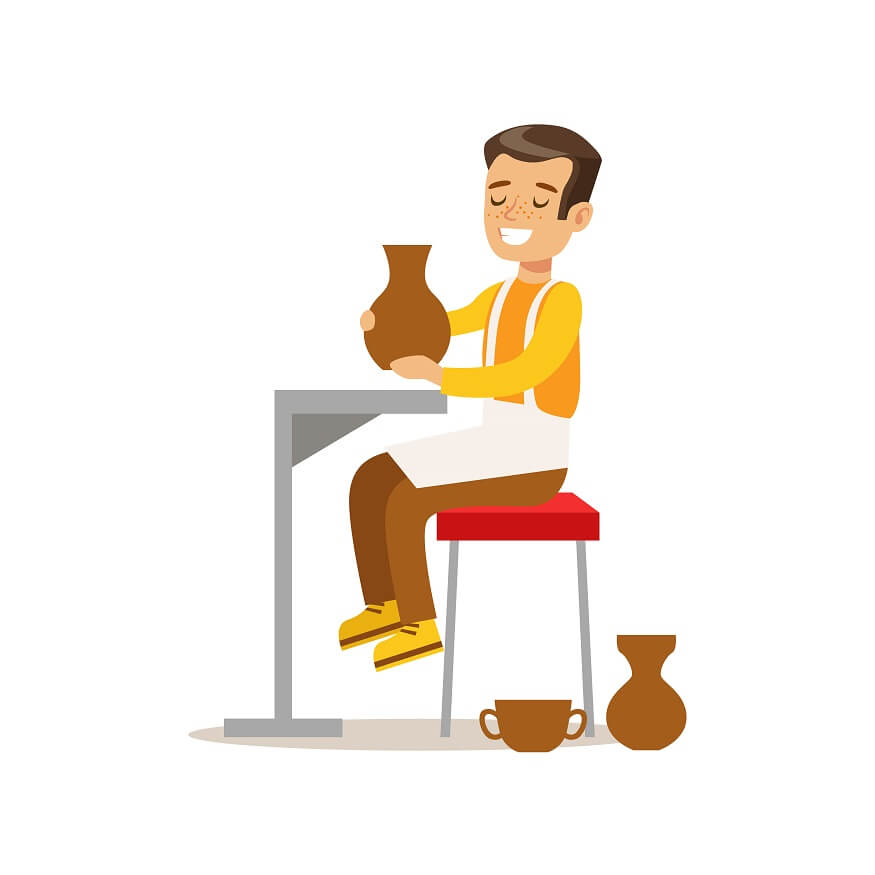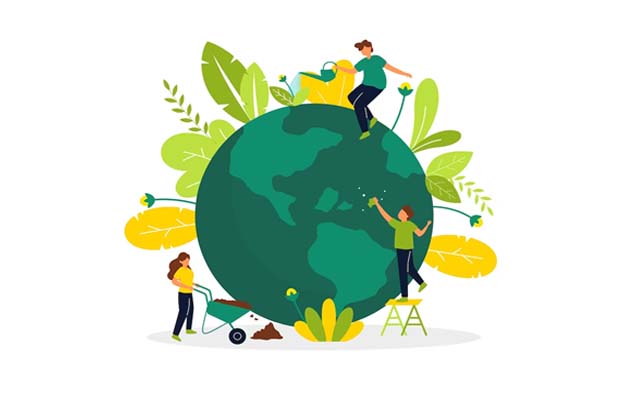Pottery is a traditional art form that dates back thousands of years. It gives youngsters a variety of developmental advantages in addition to giving them a platform for their creativity.
How to Introduce pottery to children
For kids, making pottery may be a really fun and instructive pastime. Their creativity, motor abilities, and comprehension of materials and processes can all benefit from it. When teaching youngsters about pottery, keep the following points in mind:
Age Appropriateness: Certain aspects of pottery may not be appropriate for very young children. It is recommended to hold off until the youngster is old enough to handle the tools and materials safely and can adhere to safety precautions. Typically, kids as young as 5 or 6 can begin with simple clay crafts.
Start with Basics: Explain to them the fundamental principles of pottery, such as removing air bubbles from the clay, cutting out basic forms, and drying and painting their finished pieces. Before using the potter’s wheel, you could start by using hand-building methods like slab work, coil pots, or pinch pots.
Safety First: Ensure the workspace is safe for children. Tools should be appropriate for their age and ability, and supervision is necessary to ensure they use them correctly. Also, remember that some clays and glazes can be toxic, so it’s important to choose materials that are non-toxic and safe for children.
Use Ready-Made Clay: Consider using ready-made clay, which is available in craft stores and online. This clay is pre-prepared and is often safer and easier for children to use than raw clay.
Let Them Be Creative: Encourage them to be creative and make their own designs. Pottery is a great way for children to express their creativity and it can be a lot of fun for them.
Patience: Pottery requires patience as it involves various steps like moulding, drying, firing, glazing, and firing again. Children can learn the virtue of patience while they eagerly wait for their creations to come out of the kiln.
Cleanup: Teach children to clean up the workspace after they’re done. Clay can be messy, but cleaning up is an important part of the process. It also instils responsibility.
Consider a Class: If you’re not comfortable teaching pottery yourself, consider enrolling your child in a pottery class. Many art centres and community colleges offer pottery classes for children.
Display Their Work: Finally, display their finished pieces in your home. This will give them a sense of achievement and motivate them to create more.
Remember, the goal is to have fun and allow the child to explore their creativity. Pottery is an art form that many children enjoy, and with the right guidance, they can create beautiful pieces of art.
Also Read: Collaborative Art Projects for Kids and Parents
Materials needed for pottery for children
If you’re wondering what materials your child would need for a pottery workshop, there are several essential materials and tools you can consider:
Clay: This is the most important material. You can choose from a variety of clays, but for children, it’s advisable to use air-dry or oven-bake clay, which is safe and easy to handle. Make sure it’s non-toxic.
Water: You’ll need water to moisten the clay and keep it malleable while the children work. It’s also useful for smoothing the clay’s surface.
Pottery Tools: A basic pottery tool kit usually includes a wire clay cutter, a sponge, a needle tool, a ribbon tool, a loop tool, and a wooden modelling tool. Most of these tools have kid-friendly versions available.
Work Surface: A waterproof mat or a piece of canvas or cloth can serve as a suitable work surface. It prevents the clay from sticking to tables and makes cleanup easier.
Rolling Pin: This is useful for flattening clay, especially when children are making slab constructions.
Moulds and Stamps: These can be useful for children who want to add textures or patterns to their clay.
Paints and Brushes: Once the clay pieces have dried, children can paint them using acrylic paints. You can also get non-toxic ceramic paints for a more authentic pottery feel.
Sealant: This can be applied to the finished and dried piece to protect the paint and give the pottery a shiny appearance. Make sure to choose a non-toxic sealant.
Aprons and Towels: Pottery can be a messy activity, so it’s a good idea to have aprons for the children and towels for cleaning up.
Storage Containers: You’ll need containers with lids to store clay that’s not currently in use.
Oven (Optional): If you’re using oven-bake clay, you’ll obviously need an oven. It’s crucial that an adult supervise this part of the process.
Also Read: Clay Modelling Benefits for Kids
Benefits of pottery for children
Pottery can offer a host of benefits for children, extending beyond the realm of simple fun and creativity. Here are some of the key advantages:
Motor Skill Development: Working with clay can greatly help in enhancing fine motor skills. The actions of moulding, shaping, and sculpting require children to use their hands and fingers, improving their dexterity and hand-eye coordination.
Cognitive Development: Pottery encourages problem-solving and spatial thinking. Children need to figure out how to transform a lump of clay into a three-dimensional object, which requires them to plan, conceptualise, and execute their ideas.
Creativity and Expression: Pottery is a wonderful outlet for self-expression. Children can let their imaginations run wild as they create unique pieces of art. It’s an opportunity to invent, innovate and express their feelings through their creations.
Relaxation and Mindfulness: The act of working with clay can be incredibly calming and therapeutic. It allows children to be ‘in the moment’ and can help in reducing stress and anxiety.
Patience and Perseverance: Pottery is a process that requires patience, from shaping the clay to waiting for it to dry, to the final steps of firing and glazing. It teaches children the importance of perseverance and delayed gratification.
Sensory Development: Pottery is a highly tactile experience. Working with different textures and materials can enhance a child’s sensory development and awareness.
Self-Esteem and Confidence: There’s a great sense of accomplishment that comes from creating something from scratch. This can boost a child’s self-esteem and confidence in their abilities.
Understanding of the Physical World: Through pottery, children can gain a better understanding of materials and processes, which can encourage an interest in science and how things are made.
Cultural Awareness: Pottery can be a gateway to learning about different cultures and histories. Many civilisations have left a rich heritage of pottery that can offer insights into their ways of life.
Also Read: The Benefits of Mindfulness Education in Schools
EuroSchool prioritises pottery and arts, encouraging children’s creativity, fostering cognitive development, and nurturing fine motor skills, while providing an enriching, culturally aware, and therapeutic educational experience.










